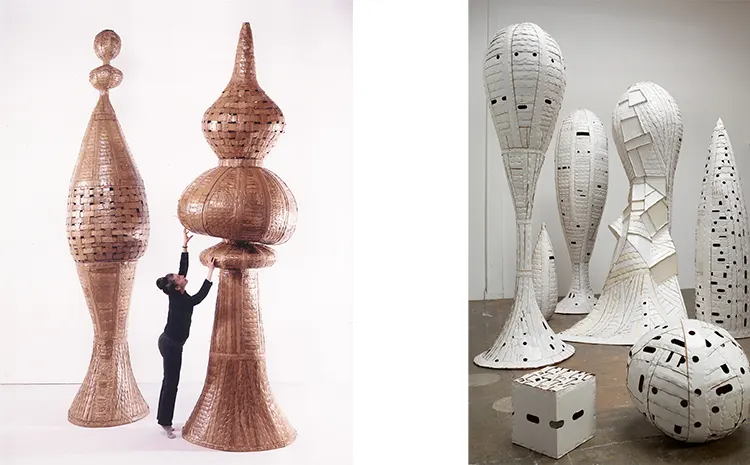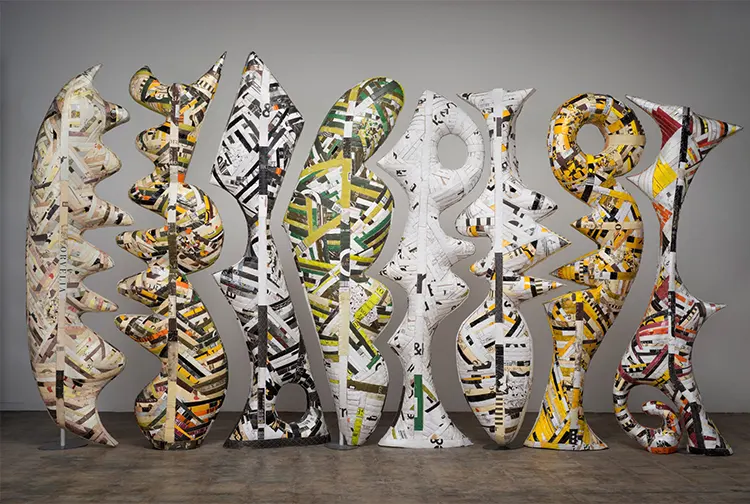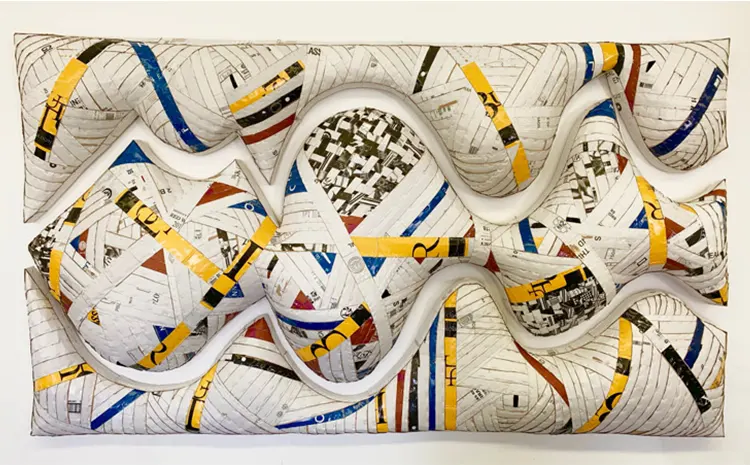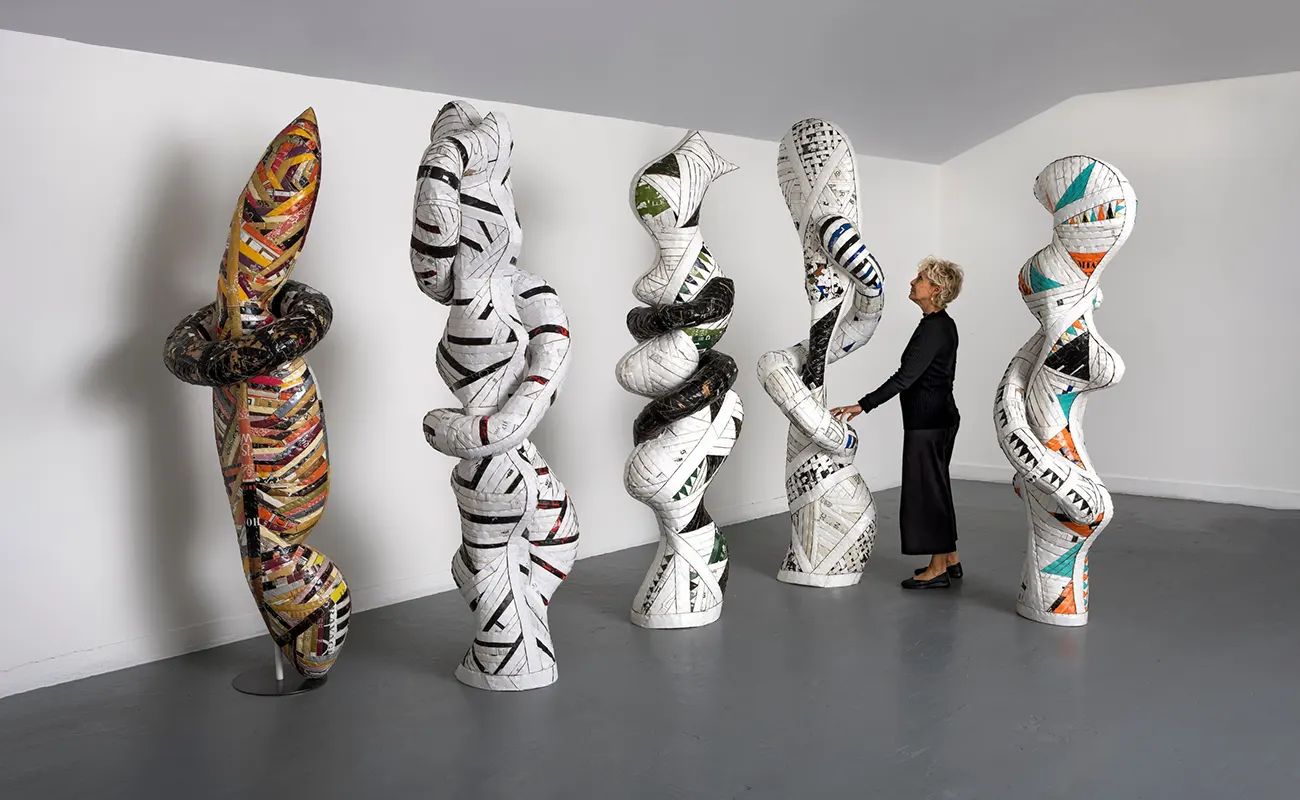A Path Forged from Michigan to California
Born in the tranquil town of Jackson, Michigan, in 1950, Ann Weber‘s artistic journey is a vivid illustration of the influence of both place and unwavering determination. Though her initial years in Michigan provided a sturdy foundation of diligence and a zeal for pursuing one’s passions, it was her formative experiences in Indiana that truly shaped her character and artistic ethos. Moving to Indiana, where she spent a significant portion of her early life, played a crucial role in molding her perspectives and artistic inclinations.
The educational odyssey of Ann Weber is as diverse as it is rich, beginning with a Bachelor of Arts in Art History from Purdue University and culminating with a Master of Fine Arts from the California College of Arts and Crafts under the guidance of Viola Frey. This journey through the realms of art history and creation was instrumental in expanding Weber’s horizons. It wasn’t just about acquiring techniques but also about embracing an ethos where boundaries are pushed, and scales are challenged. Frey, in particular, encouraged Weber to venture beyond traditional confines, instilling in her a drive to explore and innovate, laying the groundwork for a career that defies convention.

Ann Weber: The Cardboard Revolution
1991 marked a significant pivot in Ann Weber’s artistic practice, transitioning from ceramics to the unconventional medium of cardboard. This shift was inspired by a quest for materials that allowed for monumental expressions without the logistical constraints of clay. Influenced by Frank Gehry’s innovative use of cardboard in furniture design, Weber saw in cardboard not just a medium, but a challenge to the conventional perceptions of art. Cardboard, with its mundane presence and ephemeral nature, became a canvas for Weber, aligning perfectly with her goals to explore beauty in the everyday and to question the values of permanence and worth in the art world.
Weber’s sculptures transcend mere form; they are metaphors for the delicate balances and boundaries within our lives. Through her work, she delves into themes of memory, relationships, and morality, crafting pieces that invite viewers to engage on a deeply personal level. The transition to cardboard allowed Weber to push these boundaries further, exploring the tension between stability and collapse, both physically in her sculptures and metaphorically in the themes they embody. Her art becomes a dialogue with the audience, a space for shared exploration of life’s complexities, made all the more poignant by the simplicity and humility of her chosen medium.

Transforming the Ephemeral into the Eternal
Ann Weber’s approach to public art encapsulates a fascinating dialogue between materiality and permanence. By casting her cardboard creations into bronze or fiberglass, she elevates the transient nature of cardboard to a state of enduring beauty. This transformation is not merely physical but symbolic, challenging viewers to reconsider their perceptions of value and impermanence. The meticulous detail retained from the cardboard’s original state into its final form as bronze or fiberglass adds a layer of narrative and humor, inviting onlookers to ponder the stories embedded within the material. Weber’s work in public spaces thus becomes a testament to innovation and the potential of art to find significance in the everyday, turning the mundane into the monumental.
The choice to immortalize cardboard, a material emblematic of disposability, in permanent materials speaks volumes about Weber’s artistic philosophy. It reflects a profound commentary on the beauty of transformation and the value inherent in overlooked materials. This process not only challenges societal notions of worth but also serves as a metaphor for resilience and reinvention. Through her public art projects, Weber invites a reevaluation of our surroundings, encouraging a deeper appreciation for the charm and potential lurking in the ordinary. Her sculptures stand as beacons of creativity, humorously and poignantly bridging the gap between ephemeral existence and lasting impact.

Ann Weber: A Career Cultivated Through Recognition and Exploration
The trajectory of Ann Weber’s career has been significantly shaped by the accolades and opportunities that have come her way. Awards such as the Pollock Krasner Grant and residencies in diverse locales like Rome, Germany, and China, have not only affirmed her artistic endeavors but have also enriched her practice with global perspectives. These experiences have provided Weber with unique settings and challenges, pushing her to explore new dimensions within her work. The exposure to different cultures and artistic communities has broadened her understanding and appreciation of art’s universal language, infusing her practice with a richness that transcends geographical boundaries.
Moreover, the recognition and support from the art community have played a crucial role in Weber’s continuous evolution as an artist. Each exhibition, whether a solo show at the Wönzimer Gallery in Los Angeles or a group exhibition at the Torrance Art Museum, is approached as a fresh dialogue with a new audience. Weber’s adaptability and openness to the distinct cultural and spatial dynamics of each venue have enabled her to effectively engage with a diverse range of viewers. This responsiveness to context underscores her commitment to making art that resonates on a universal level, highlighting her ability to navigate the varied landscapes of the art world with grace and insight.
Ann Weber’s journey from the tactile intimacy of clay to the conceptual versatility of cardboard, and beyond, reveals an artist deeply committed to exploring the bounds of material, memory, and meaning. Her work, at once monumental and minutely detailed, invites us into a world where the ordinary becomes extraordinary, and the fleeting is captured in the permanence of artistic expression. Through her innovative use of materials, thematic depth, and engagement with public spaces, Weber continues to challenge and inspire, ensuring her place as a dynamic force in contemporary art.





